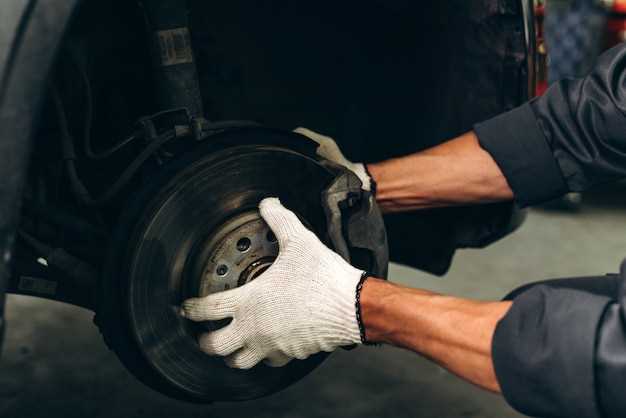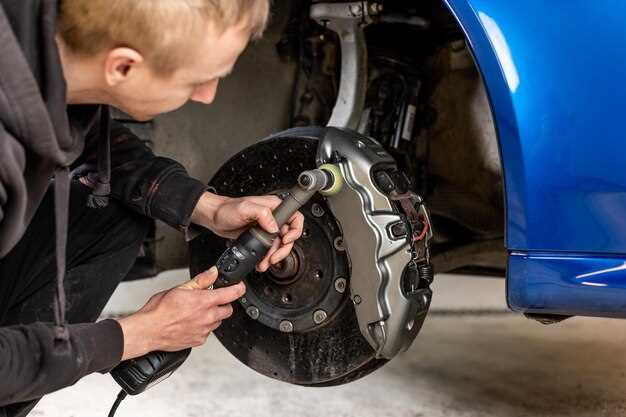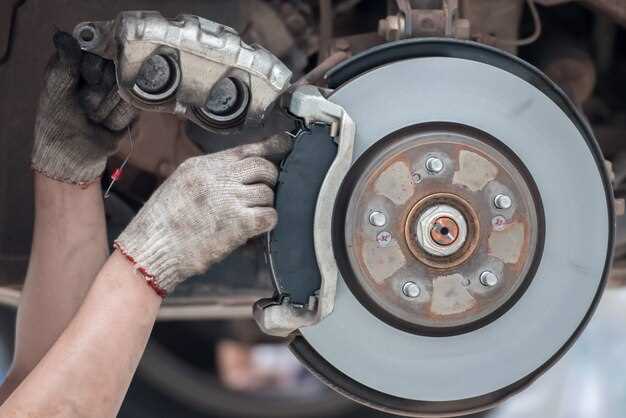
When it comes to vehicle safety, the brake system is one of the most critical components that deserves attention. Upgrading your brake system can significantly enhance your vehicle’s stopping power, responsiveness, and overall safety. With advancements in technology and materials, modern brake systems offer a plethora of options that cater to different driving styles and needs.
Whether you are a daily commuter, an off-road enthusiast, or a racing aficionado, understanding the intricacies of brake upgrades can make a substantial difference. Upgrading your brake system not only improves performance but also allows for better handling in various driving conditions. However, navigating the options available can be overwhelming without the right guidance.
This article provides essential insights and practical tips for upgrading your brake system. From selecting the appropriate brake pads and rotors to considering hydraulic systems and brake fluids, we will explore the key factors that influence brake performance. Enhancing your vehicle’s braking capabilities is not just an upgrade; it’s an investment in your safety and driving experience.
Upgrading Your Brake System: Key Insights and Tips
Upgrading your brake system can significantly enhance your vehicle’s performance, providing not just improved stopping power but also better handling and safety. Below are essential insights and tips to consider before making any modifications.
- Understand Your Needs:
Identify the primary reason for the upgrade. Are you seeking enhanced performance for racing, or simply improving safety for daily driving? Knowing this will guide your choices.
- Choose the Right Components:
Different components affect brake performance in unique ways. Consider the following:
- Brake Pads: Opt for high-performance pads made from materials like ceramic or semi-metallic for better heat resistance and fading.
- Brake Rotors: Upgrade to slotted or drilled rotors to improve heat dissipation and prevent brake fade.
- Calipers: Consider performance calipers for improved clamping force and responsiveness.
- Brake Fluid:
Using high-quality brake fluid with a higher boiling point can prevent vapor lock during heavy use, ultimately enhancing performance.
- Installation Matters:
Ensure that the installation is performed correctly. Improper installation can compromise performance and safety. Consider professional help if needed.
- Consider Weight and Size:
Upgrading to larger rotors and lighter components can improve brake performance without negatively impacting vehicle dynamics.
- Regular Maintenance:
After upgrading, keep up with regular maintenance. This includes checking pads, rotors, and fluid levels to ensure consistent performance.
- Compatibility:
Make sure that all components are compatible with your vehicle’s make and model to avoid any performance issues.
By carefully considering these factors, you can maximize the performance benefits of your upgraded brake system and enjoy a safer, more responsive driving experience.
Choosing the Right Brake Components for Enhanced Performance
Selecting the appropriate brake components is crucial for achieving optimal vehicle performance. A well-designed brake system enhances safety and ensures responsiveness during driving. To begin with, consider the type of driving you will be doing–whether it’s regular commuting, off-road adventures, or high-performance racing. Each scenario demands different specifications from brake components.
First and foremost, focus on brake pads. The material of the brake pads significantly affects performance. Options such as ceramic, semi-metallic, and organic materials cater to various needs. Ceramic pads are known for their low dust production and quieter operation, making them ideal for everyday driving. Semi-metallic pads, on the other hand, provide better stopping power at high temperatures, which is beneficial for performance driving.
Next, evaluate the brake rotors. Solid rotors are standard, but vented or slotted rotors can help dissipate heat more effectively, preventing brake fade during intense conditions. Upgrading to high-performance rotors can improve braking efficiency and enhance the overall driving experience. Remember to ensure compatibility with the existing calipers when making this upgrade.
Another essential component is the brake lines. Stainless steel brake lines improve responsiveness compared to rubber lines, as they expand less under pressure. This upgrade allows for firmer brake feel and better control, essential in high-performance scenarios where precision is vital.
Lastly, consider the brake calipers. Upgraded calipers can provide improved clamping force, allowing for better performance in stopping power. Multi-piston calipers distribute pressure more evenly across the brake pad, enhancing braking consistency and performance during emergency stops.
In summary, selecting the right brake components involves understanding your driving needs and choosing parts that prioritize performance. Invest in quality, compatible components to achieve the enhanced braking capabilities that ensure not only safety but also an exhilarating driving experience.
Step-by-Step Guide to Installing Upgraded Brake Parts

Upgrading your brake system can significantly improve your vehicle’s performance and safety. Follow this step-by-step guide to install your new brake parts effectively.
Step 1: Gather Your Tools and Parts
Before starting the installation, ensure you have all necessary tools: a jack, jack stands, lug wrench, socket set, and a C-clamp. Additionally, procure upgraded brake components, such as rotors, pads, and calipers, suited for your vehicle.
Step 2: Prepare Your Vehicle
Park the vehicle on a flat surface and apply the parking brake. Loosen the lug nuts on the wheels where you’ll be working, but do not remove them yet. Use the jack to lift the vehicle, placing it securely on jack stands for safety.
Step 3: Remove the Wheels
Completely remove the loosened lug nuts and take off the wheels. This will give you access to the brake assembly where you will install the upgraded parts.
Step 4: Remove the Old Brake Components
Begin by removing the caliper bolts using a socket set. Carefully slide the caliper off the rotor and support it without letting it hang by the brake line. Next, remove the old brake pads and unscrew the rotor as necessary.
Step 5: Install Upgraded Components
Attach the new rotor to the hub by following the manufacturer’s instructions. Ensure it is seated correctly. Next, install the upgraded brake pads into the caliper bracket. Press the caliper piston back using a C-clamp to create enough space for the new pads.
Step 6: Reattach the Caliper
Carefully slide the caliper over the newly installed brake pads and rotor. Secure it in place by tightening the caliper bolts. Ensure that everything is tight and aligned properly to avoid any issues during braking.
Step 7: Replace the Wheels
Reinstall the wheels, starting with the lug nuts. Tighten them by hand before lowering the vehicle from the jack stands. Once it is back on the ground, use a torque wrench to tighten the lug nuts to the manufacturer-recommended specifications.
Step 8: Test the Brake System
Before driving, pump the brake pedal several times to ensure the brake pads seat correctly against the rotor. Check for any unusual noises or movements. It’s advisable to test the brakes in a safe environment, such as an empty parking lot, to ensure everything functions as intended.
Following this step-by-step guide will help you successfully install upgraded brake parts and enhance your vehicle’s overall braking performance.
Maintaining Your Upgraded Brake System for Longevity

To ensure the longevity of your upgraded brake system, regular maintenance is essential. Start by inspecting the brake pads and rotors for wear. High-performance components often wear differently than standard parts, so it’s vital to monitor their condition frequently. Replacing worn pads before they cause damage to the rotors can save money and maintain optimal performance.
Next, check the brake fluid levels. Upgraded systems typically require higher quality, heat-resistant fluids that should be changed periodically to prevent moisture contamination. Regular fluid exchanges not only enhance performance but also contribute to the overall lifespan of the braking system.
Pay attention to the brake lines as well. Consider upgrading to braided stainless steel lines, which resist expansion under pressure. Inspect them for any signs of wear or leaks, as compromised lines can significantly impact braking efficiency and safety.
Moreover, calibrate your brake system if you’ve modified other vehicle components. Changes in suspension or tire size can affect the braking dynamics, making it necessary to adjust the system to maintain optimal performance.
Lastly, always adhere to manufacturer recommendations for maintenance intervals specific to your upgraded parts. By following a disciplined maintenance routine, you can significantly extend the lifespan of your brake system, ensuring it continues to deliver excellent performance when you need it the most.
